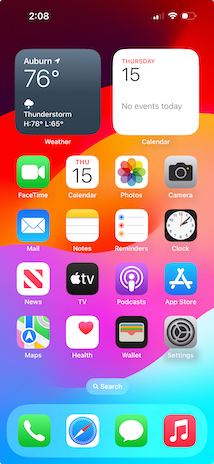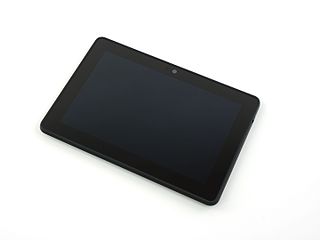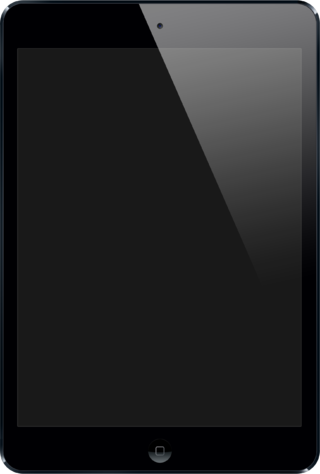
Sling Media Inc. is an American technology company that develops placeshifting and Smart TV solutions for consumers, multiple-system operators and set top box manufacturers. The company is based in Foster City, California, and was a subsidiary of EchoStar Corporation. Their initial product, the Slingbox, debuted on the US market on July 1, 2005. The EchoStar business unit was part of a corporate assets exchange with Dish Network at the beginning of 2017 and now operates as Dish Technologies Corporation under Dish Network.
Monsoon Multimedia was a company that manufactured, developed and sold video streaming and place-shifting devices that allowed consumers to view and control live television on PCs connected to a local (home) network or remotely from a broadband-connected PC or mobile phone. It was one of 5 major transformations initiated by Prabhat Jain, a Silicon Valley entrepreneur with 5 undergraduate and post graduate engineering degrees from Cal Berkeley and Univ of Vienna, Austria. On the even of Cisco acquiring Monsoon in 2017, EchoStar, the new parent of Sling sued Monsoon for patent infringement, having obtained confidential information about the date of the acquisition by Cisco from a Monsoon employee under murky circumstances. Monsoon settled the lawsuit by agreeing not to sell its products in the USA simply because it did not have the legal funds to fight mighty Echostar's legal maneuvers. EchoStar thus successfully removed its only competitor from the market place. This meant Monsoon's death knell.

TVCatchup was an Internet television service for viewing free-to-air UK channels. It operated as a cable service and retransmitted BBC, Channel 4, Channel 5, and ITV, amongst others, only in the UK. Users were able to access the service via desktop browsers as well as smartphone and tablet apps. The service was funded by advertising, with advertisements preceding the live channel stream.

iOS is a mobile operating system developed by Apple Inc. exclusively for its hardware. It is the operating system that powers many of the company's mobile devices, including the iPhone; the term also includes the system software for iPads as well as on the iPod Touch devices. It is the world's second-most widely installed mobile operating system, after Android. It is the basis for three other operating systems made by Apple: iPadOS, tvOS, and watchOS. It is proprietary software, although some parts of it are open source under the Apple Public Source License and other licenses.

AirPlay is a proprietary wireless communication protocol stack/suite developed by Apple Inc. that allows streaming between devices of audio, video, device screens, and photos, together with related metadata. Originally implemented only in Apple's software and devices, it was called AirTunes and used for audio only. Apple has since licensed the AirPlay protocol stack as a third-party software component technology to manufacturers that build products compatible with Apple's devices.
Skifta was a media shifting service developed by Qualcomm Atheros. It enabled Android and Apple (IOS) smartphone and tablet users to access their music, pictures, and videos from their phone, from cloud media services or remotely from another location via a smart mobile device. The user could then stream media to connected consumer electronics anywhere that supports DLNA and UPnP standards over WiFi or 3G networks.
WatchESPN was a branding of the Internet television website and mobile application operated by ESPN Inc., a joint venture between The Walt Disney Company and Hearst Corporation.
The IdeaPad tablets from Lenovo were a brand of consumer-oriented tablet computers designed for home use or entertainment, as opposed to the business-focused ThinkPad Tablet series. Devices sold in certain countries, such as China, India and New Zealand, were sold under the LePad brand, similar to the LePhone series of smartphones. IdeaPad-branded tablets have been produced with the Android and Windows operating systems.

The iPad is a tablet computer, developed and marketed by Apple Inc. The third device in the iPad line of tablets, it added a Retina Display, the new Apple A5X chip with a quad-core graphics processor, a 5-megapixel camera, HD 1080p video recording, voice dictation, and support for LTE networks in North America. It shipped with iOS 5, which also provides a platform for audio-visual media, including electronic books, periodicals, films, music, computer games, presentations and web browsing.

Hopper is a line of digital video recording (DVR) set-top boxes offered by the U.S. direct-broadcast satellite television provider Dish Network. First introduced at Consumer Electronics Show in January 2012, the Hopper was released in March 2012 as a component of the provider's whole-home DVR system, which networks the main Hopper unit with smaller "Joey" set-top boxes to form a client-server architecture.
Microsoft mobile services are a set of proprietary mobile services created specifically for mobile devices, they are typically offered through mobile applications and mobile browser for Windows Phone platforms, BREW, and Java. Microsoft's mobile services are typically connected with a Microsoft account and often come preinstalled on Microsoft's own mobile operating systems while they are offered via various means for other platforms. Microsoft started to develop for mobile computing platforms with the launch of Windows CE in 1996 and later added Microsoft's Pocket Office suite to their Handheld PC line of PDAs in April 2000. From December 2014 to June 2015, Microsoft made a number of corporate acquisitions, buying several of the top applications listed in Google Play and the App Store including Acompli, Sunrise Calendar, Datazen, Wunderlist, Echo Notification Lockscreen, and MileIQ.
The iPad Mini is a line of mini tablet computers designed, developed, and marketed by Apple Inc. It is a sub-series of the iPad line of tablets, with screen sizes of 7.9 inches and 8.3 inches. The first-generation iPad Mini was announced on October 23, 2012, and was released on November 2, 2012, in nearly all of Apple's markets. It featured similar internal specifications to the iPad 2, including its display resolution.

The iPad is a tablet computer produced and marketed by Apple Inc. Compared to its predecessor, the third-generation iPad, the fourth-generation iPad maintained the Retina Display but featured new and upgraded components such as the Apple A6X chip and the Lightning connector, which was introduced on September 12, 2012. It shipped with iOS 6, which provides a platform for audio-visual media, including electronic books, periodicals, films, music, computer games, presentations and web content. Like the third-generation iPad it replaced, it was supported by five major iOS releases, in this case iOS 6, 7, 8, 9, and 10. iOS 11, which was released on September 19, 2017, does not support the fourth-generation iPad as that update does not support 32-bit devices and apps.

The first-generation iPad is a tablet computer designed and marketed by Apple Inc. as the first device in the iPad lineup of tablet computers. The device features an Apple A4 SoC, a 9.7 in (250 mm) touchscreen display, and, on certain variants, the capability of accessing cellular networks. Using the iOS operating system, the iPad can play music, send and receive email and browse the web. Other functions, which include the ability to play games and access references, GPS navigation software and social network services can be enabled by downloading apps.

The Fire HDX, formerly named Kindle Fire HDX, was a high-end model in Amazon Fire line of tablet computers. It was announced on September 25, 2013, and was available in two models, 7 inch and 8.9 inch. The 7 inch WiFi model was released on October 18, 2013, and the 8.9 inch WiFi model was released on November 7, 2013, in the United States.

The iPad Air is a tablet designed, developed, and marketed by Apple Inc. It was announced on October 22, 2013, and was released on November 1, 2013. Part of the iPad line of tablet computers, the iPad Air features a thinner design than its predecessors, with similarities to the contemporaneous iPad Mini 2.

The Nokia Lumia 2520 is a Windows RT tablet computer originally developed by Nokia. It is Nokia's first and only Windows-based tablet, and the company's first tablet since its Nokia Internet Tablet line. Sharing its design and marketed with the Nokia Lumia series of Windows Phone products, the device incorporates a quad-core Snapdragon 800 chip with 4G LTE support, along with a 10.1-inch (26 cm) 1080p display and an optional "Power Keyboard" dock adding additional battery capacity, USB ports, and a physical hardware keyboard. Following a period of speculation and leaks, the Lumia 2520 was officially unveiled on 22 October 2013, and released in North America on 21 November 2013.

The first-generation iPad Mini is a mini tablet computer designed, developed, and marketed by Apple Inc. It was announced on October 23, 2012, as the fourth major product in the iPad line and the first of the iPad Mini line, which features a reduced screen size of 7.9 inches (20 cm), in contrast to the standard 9.7 inches (25 cm). It features similar internal specifications to the iPad 2, including its display resolution.

The Sony Xperia Z4 Tablet is a touchscreen Android tablet manufactured and designed by Sony Mobile. Unlike its predecessor, the Xperia Z4 tablet features a 2560 x 1600 resolution 10.1-inch screen and is water and dustproof with a rating of IP65 and IP68. The tablet is lighter and thinner than its predecessor, weighing at 0.85 pound (389 g) for the WiFi model and 0.86 pound (393 g) for the LTE model and is 0.24 inches (6.1 mm) thick. The Z4 Tablet features the Snapdragon 810 processor and WQXGA resolution screen. It was announced on 2 March 2015 in a press conference held by Sony alongside the Sony Xperia M4 Aqua during the 2015 Mobile World Congress in Barcelona, Spain.












